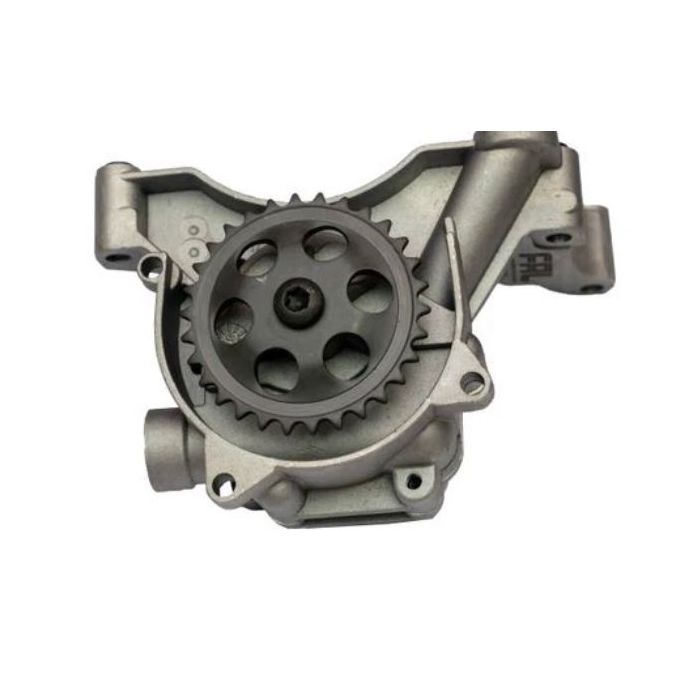Prevent operational issues with a well-tuned clp engine.
Prevent operational issues with a well-tuned clp engine.
Blog Article
How a Clp Engine Can Enhance Performance in Various Industries
The introduction of CLP engines notes a considerable shift in functional performance across different industries, driven by their ability to optimize gas consumption and reduce downtime. Industries such as manufacturing and logistics stand to obtain considerably from their durable style and constant power output, which assure to enhance operations and improve productivity. As companies increasingly prioritize sustainability together with effectiveness, the role of CLP engines becomes much more vital. What stays to be seen is how these innovations will form the future landscape of commercial procedures and their effect on wider economic fads (clp engine).
Review of CLP Engines
CLP engines, or Continual Liquid Propellant engines, represent a considerable advancement in propulsion innovation, especially for area applications. These engines make use of a constant feed system that enables the continual expulsion of propellant, causing boosted efficiency and performance compared to standard solid or hybrid propulsion systems. By preserving a continuous circulation of liquid propellant, CLP engines can accomplish a lot more precise drive control, which is crucial for steering spacecraft in various goal situations.
The layout of CLP engines incorporates advanced materials and cutting-edge gas monitoring systems. clp engine. This results in reduced weight and raised reliability, vital factors for long-duration space missions. The constant procedure lessens the threat of burning instability, an usual obstacle in standard rocket engines.

Benefits in Manufacturing
The production of Continual Fluid Propellant (CLP) engines presents a number of noteworthy benefits that enhance both performance and cost-effectiveness. One of the primary benefits is the structured production process, which lowers the complexity related to conventional propulsion systems. By utilizing fluid propellant, producers can attain better accuracy in engine performance, resulting in optimized power output and minimized waste.
In addition, CLP engines help with a higher degree of modularity, permitting easier combination right into different manufacturing lines. This flexibility can significantly decrease lead times and enhance overall operational adaptability. The usage of CLP modern technology additionally often tends to reduce the need for extensive upkeep as a result of fewer moving parts, which equates into minimized downtime and functional costs.

Applications in Logistics
Leveraging Continuous Liquid Propellant (CLP) engines in logistics offers considerable advantages in operational performance and reliability. These engines give a durable service for numerous transportation needs, making it possible for the seamless motion of products across dig this substantial ranges. The inherent design of CLP engines permits constant power result, which translates into smoother and much more foreseeable transport routines.
One of the vital applications of CLP engines in logistics is in sturdy freight transport, where they can drive both ground and airborne vehicles. Their capability to maintain high efficiency under differing load conditions guarantees that distribution timelines are met, thus boosting consumer contentment. In addition, CLP engines can be incorporated right into automated logistics systems, helping with real-time monitoring and maximizing route preparation.
Furthermore, the resilience of CLP engines decreases maintenance downtime, enabling logistics business to maximize their operational capabilities. This is specifically beneficial in warehousing operations, where performance in taking care of and delivering products is essential. As logistics continues to evolve, the integration of CLP engines stands for a forward-thinking technique that not only enhances efficiency but likewise sustains the market's expanding needs for reliability and rate.
Influence On Energy Effectiveness
How do Continuous Fluid Propellant (CLP) engines enhance power effectiveness in transportation? CLP engines utilize a regular circulation of fluid fuel, maximizing combustion procedures and preserving a steady thrust output. This design minimizes energy losses related to typical burning engines, where gas distribution can differ and result in inefficiencies.
The continuous procedure of CLP engines enables for an extra effective thermal cycle, leading to higher particular impulse contrasted to standard engines. clp engine. This equates to lowered gas usage for the same amount of job done, significantly decreasing functional prices throughout numerous transportation sectors, consisting of aviation and maritime markets
Additionally, the capability of CLP engines to preserve ideal performance under varying tons problems decreases the demand for constant acceleration and deceleration, additionally enhancing gas efficiency. Improved power performance not only adds to cost financial savings however additionally results in decrease greenhouse gas discharges, straightening with worldwide sustainability goals.
Future Trends and Innovations
Emerging innovations in Constant Fluid Propellant (CLP) engine innovation promise to change the landscape of transport efficiency and sustainability. As industries pivot toward greener choices, CLP engines stand at the leading edge, incorporating ingenious materials and layout methodologies that boost efficiency while minimizing ecological impact.
Among one of the most promising go now trends is the fostering of hybrid systems that combine CLP engines with renewable resource resources. This synergy can enhance fuel intake and minimize discharges, straightening with international sustainability goals. Improvements in computational fluid click reference dynamics (CFD) are assisting in the layout of even more aerodynamically effective engines, leading to lowered drag and boosted fuel performance.
Furthermore, the growth of clever tracking systems is readied to enhance functional effectiveness. These systems take advantage of information analytics and IoT innovation to enhance engine performance in real-time, making certain that the engines run within their most efficient criteria.
As study continues to check out alternate propellant formulations-- such as biofuels and synthetic gas-- the future of CLP engines looks encouraging. By using these technologies, markets can not just improve their effectiveness but also add considerably to a cleaner, a lot more lasting future in transport.
Final Thought
In verdict, CLP engines stand for a significant innovation in effectiveness throughout numerous sectors. The integration of sophisticated products and fewer moving components reduces upkeep requirements, while positioning with sustainability objectives placements CLP engines as a critical modern technology for the future.
Report this page